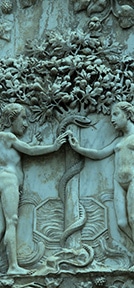Course Description
When we read the Bible, we tend to focus on the story and we overlook where it all took place. However, the places themselves; their names, their climates, their distinct features, add an extra layer of meaning to the stories we thought we knew.
Dr Jonathan Lipnick, the creator of this course, is a licensed Israeli tour guide. As someone who actually lives in and travels throughout the Land of the Bible, he combines his extensive academic background and insights drawn from the field, into this course. We start our journey with the Old Testament, asking question about the Biblical Land of Israel. Why did Abram migrate to Shechem? How did Joshua cross the Jordan Valley? And what was the implication of David’s decision to move his capital to Jerusalem? We then travel forward in time, to the Roman province of Judea, in the first century, looking at the life of Jesus. Following His footsteps from Nazareth to the Sea of Galilee and finally to Jerusalem, we discuss Jesus’ physical and spiritual journey from birth to crucifixion.
When do our courses start?
We have a few starting dates so you can choose the class that best suits your schedule. Our next class starts on Sunday, September 07 at 8:00 PM. If you are interested in one of our classes click on the schedule below to start the registration process.























